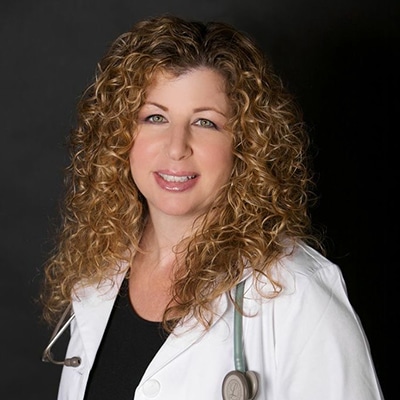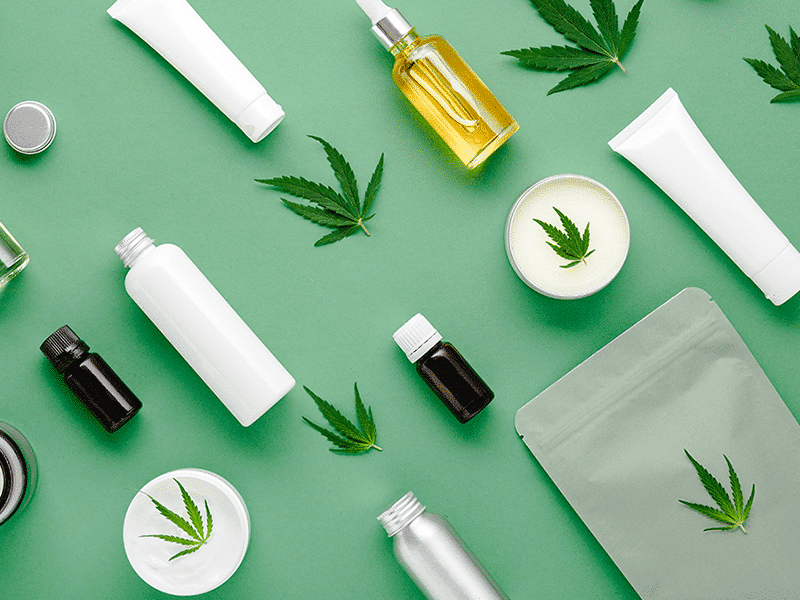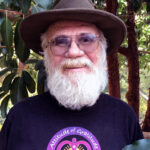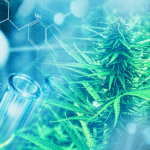This transcript is adapted from CannMed’s weekly podcast, hosted by Ben Amirault, who recently interviewed Bonni Goldstein, MD, one of the country’s most respected and experienced medical cannabis physicians. Dr. Goldstein has treated thousands of patients with medical cannabis. She is the medical director of Canna-Centers Wellness & Education and the clinical advisor to Cannformatics. She is also the author of Cannabis is Medicine: How Medical Cannabis and CBD are Healing Everything from Anxiety to Chronic Pain. Dr. Goldstein will be leading the Medical Practicum at CannMed 2023 (May 15-17), where she will also be speaking about CBG and other minor cannabinoids during the main session.

Ben Amirault, CannMed: I wanted to discuss one of the so-called minor compounds that you’ll be covering during your talk at CannMed this month. You have said that cannabigerol, or CBG, is one of your favorite cannabinoids. Why?
Dr. Goldstein: It appears that CBG does a lot of things that THC does and a lot of things that CBD does — but maybe even a little bit better. It’s kind of a bridge between THC and CBD. CBG is not intoxicating or impairing. It seems to be effective at lower doses compared to CBD. And it does appear to address some of the main issues that people turn to cannabis for — inflammation, pain, anxiety, sleep problems, depression, and cancer. So, like it checks all the boxes, especially for people who don’t want to get high and who don’t have the ability to pay for very high doses of CBD.
CannMed: It’s interesting that you say CBG is a bridge between THC and CBD. Is that because CBG is a precursor for the other plant cannabinoids?
Dr. Goldstein: CBG’s parent compound, cannabigerolic acid (CBGA), is kind of known as the mother of all the cannabinoids in that it’s the compound that’s found in immature cannabis flower. And then, based on the genetics of the plant and the enzymes that it’s exposed to, CBGA changes into CBDA and/or THCA, which turn into CBD and THCA when heated. CBGA hasn’t really been studied very much. I would say it is highly understudied. But I suspect that we will eventually find out that CBGA has some very interesting anti-inflammatory and anti-cancer properties. We don’t know really know yet. But at least CBG is being studied. I constantly look at the scientific literature, and just this year there’s a study published from Israel on how CBG may be helpful for multiple sclerosis. And there’s another study that looked at CBG’s mechanism of action in terms of how it works for pain and inflammation. So, there’s a lot of interest in CBG, which is really exciting.
CannMed: For what conditions do you think CBG has the most promise? What are you most interested in?
Dr. Goldstein: I think CBG holds a lot of promise for people who struggle with inflammation, pain, and mood disorders, like anxiety or depression. Ethan Russo, along with other researchers, recently did a survey of CBG users. About 70 percent of people said CBG was superior to their conventional medication. It was highly rated for anxiety, pain, depression, and sleep problems. I don’t know that it’s a direct sleep agent, but when you are having less anxiety and less pain you likely will fall asleep a little bit easier and maybe sleep better. It’s noteworthy that much of this anecdotal data is supported by findings from preclinical research.
CannMed: In the survey you mentioned, was that CBG being taken by itself or in combination with other cannabinoids?
Dr. Goldstein: In the survey, I think they tried to sort that out, and it was people taking plant CBG that they buy in the hemp market because most CBG products that are on the market do not contain a significant amount of THC. They are coming from hemp plants, so they are readily available on the hemp market. I’ve seen it as flower, I’ve seen it as topical, which has anti-bacterial and anti-psoriatic effects. Psoriasis is a well-known condition where people get not only joint pain but they also get these thick red patches and scales on their skin. It can be a very difficult condition. And CBG has been found to have anti-psoriatic properties. It acts on the skin cells themselves and inhibits the build-up of those scaly patches. I think this just goes to show that the applications of cannabinoids are truly wide-ranging. People often ask: How is it possible that these compounds can do so many things? Well, they have multiple targets in the brain and body and that’s what makes them so amazing. Remember, the pharmaceutical model is “this medicine addresses this specific target.” Whereas cannabinoids are what we call promiscuous – they go to a lot of targets.
CannMed: How does CBG differ in its targets from other plant cannabinoids? Does it work on the same receptors with similar mechanisms of action?
Dr. Goldstein: There’s overlap with some of the actions of THC and CBD, for example. But then there are also some opposite reactions. CBD and CBG have opposite reactions at a specific serotonin receptor — 5HT1A — where CBD binds to it and CBG blocks it. They both act at that receptor, but in different ways. CBG also overlaps with CBD by binding to what we call PPAR receptors [on the surface of the cell’s nucleus]. And both of these plant cannabinoids interact with TRP [ion] channels to help with inflammation and pain.
CBG is the only cannabinoid that has been found to work at the alpha-adrenergic receptor, which mediates pain perception and inflammation. There are pharmaceuticals for ADHD or behavioral issues, for example, which target this receptor. CBG is always a compound I consider when treating children who have either behavior or other types of difficulties. I have used it in some of my patients with autism. Some families report their child is calmer, has better focus, even speech is improving in some of the children with autism who are non-verbal. But other parents report that CBG makes their child way too hyper. That may be a dosing issue. Why not try it? We know that it’s safe. And it’s under medical supervision. We start with very low doses so that we can control what’s going on and of course there’s a lot of oversight. The parents are watching, I’m watching. We’re just trying to make sure that we do no harm. Thus far, I’d say about 60 percent of kids that try CBG seem to get some benefit from it.
CannMed: I’m glad you brought up ADHD. Full disclosure: my son has been diagnosed with ADHD. I was surprised to learn that CBG might be helpful for that.
Dr. Goldstein: We don’t have clinical trials to say, yes this is definitively beneficial or detrimental for children. But we may be on the cusp of having those trials, which would be very exciting. In my practice, which is in California, I am allowed to work with parents to try different cannabinoids to see what might help. We do it very methodically. As I discuss in my book, we have a saying, ‘Rule it in or rule it out’. We start low dose, and we titrate up. We focus on one compound to see if there are benefits. And remember, too, that sometimes when we’re seeing a benefit it may be because the child is also on CBD — and maybe that combination is working well. If you add a compound and see enhanced benefits, you don’t know if it’s working because of that particular compound or the combination of the two if they’re already on something else. There’s a lot of trial and error involved, and it takes time to sort it out. I always tell families when I first meet them that we’re going to be working together for quite some time. It’s not like we just pick something and it immediately works great. We might get lucky. That happens, but that’s not the usual case.
CannMed: Another thing that stood out to me was this idea of CBG enhancing the body’s function. I was wondering if you could speak a bit to that.
Dr. Goldstein: A number of endocannabinoids, including CBD and CBG, delay the breakdown of our endocannabinoids. Remember, our endocannabinoids are our inner cannabis-like compounds, which our body releases on demand in response to a trigger, usually something that is stressing us, whether it be an illness or a traumatic insult or an infection of some sort. Your body cranks out these endocannabinoids to help maintain balance among all the various messages that our cells are constantly sending and receiving. The endocannabinoid system is a physiological regulator, and it’s helping you stay in balance. We can enhance our own natural endocannabinoid system with plant cannabinoids, which delay the breakdown of endogenous cannabinoids so that they last longer. It’s kind of like the way some anti-depressants work by increasing how long serotonin is hanging around.
CannMed: Now correct me if I’m wrong, but physical exercise is another way to spur your body into creating endocannabinoids?
Dr. Goldstein: Yes.
CannMed: Would supplementing with CBD or CBG be an effective way to keep anandamide in the system and get more benefits from our natural cannabinoids?
Dr. Goldstein: Theoretically you could look at it that way. I don’t know that there’s a direct correlation, as in take a dose and now you have extra anandamide. But I do think the literature supports this whole idea of cannabinoids being anti-inflammatory, antioxidant, neuroprotective — and one dose is not going to do the trick. It’s helpful to think in terms of a wellness regimen that includes cannabinoids, of course, in addition to other healthy things that you should be doing to enhance your endocannabinoid system – healthy diet, exercise, good sleep, really trying to control your stress.
CannMed: Could you speak to how CBG might enhance the effects of other cannabinoids or situations where you think the combination is useful?
Dr. Goldstein: There’s a 2019 animal study that showed the combination of CBD and CBG decreased neuroinflammation. They were looking specifically at neurodegenerative disorders with dementia, what we call Lou Gehrig’s Disease or ALS. And it showed in this preclinical study that CBD and CBG worked together and gave better results for protecting against neuroinflammation. This ties into the concept of the entourage effect, whereby combinations of cannabinoids and terpenes appear to enhance the benefits, the positive results. Another recent study showed that CBG in addition to THC and/or CBD has anti-cancer effects in test tube experiment looking at certain brain tumor cells. When some of my cancer patients come to me with advanced cancer, very poor prognosis — and I’ve been doing this now for a number of years — I add CBG into the mix. To me there is no harm in doing so. It doesn’t cause the impairment that anti-cancer doses of THC can sometimes cause.
CannMed: What other scenarios or situations do you encounter where you think CBG is either the right tool or might be a good companion if you have already started a cannabis regimen and you’re not getting the right results?
Dr. Goldstein: I think that if you’re trying to treat anxiety, pain, inflammation, and you are not getting great results with either THC and/or CBD, which, of course, are the two most common cannabinoids being used right now, then certainly the addition of CBG is worth a try. Remember too, that when you combine cannabinoids sometimes you can get away with a lower dose of either or both, while getting an enhanced effect from that entourage. Because there are studies that show sub-therapeutic doses of cannabinoids — meaning doses not expected to do anything clinically — when combined will work better. For a lot of people high, high doses are just not financially feasible. And sometimes that combination of small amounts of two compounds actually is more effective. As for what I would recommend CBG for — anxiety, pain, psoriasis, I use it in my patients with autism, I use it in my patients with cancer. Because it’s safe, and if somebody’s struggling and conventional medicine is not helping them or it is only helping to a point, I don’t see any reason, especially under medical supervision, not to try CBG and other cannabinoids when there’s compelling preclinical research that begs for clinical trials.
CannMed: It seems like CBG is very well tolerated by patients, but are there adverse reactions that you’ve run into?
Dr. Goldstein: I haven’t really seen a lot of adverse reactions, except for a few specific ones related to the population of children that I take care of. In some kids with autism, it’s just too overstimulating. It makes behavior go off the charts. So, I warn the families about this before we get started. It may be a dosage thing. Dosing is very, very important. Lower doses may be overstimulating. If that’s the case, we might try higher doses. But that’s specifically related to a certain population. I have not observed or heard of too many side effects from adults taking CBG. Some patients say that CBG is somewhat alerting, meaning it feels a little up. So, you would not want to take CBG right before bedtime. You figure out how you respond to it, and then don’t use it at night if that’s the effect you get. On the other hand, some people say it helps with sleep. Maybe it’s helping with sleep because it’s calming and decreases anxiety. When a doctor hands you an antidepressant or an opioid, nobody knows how you’re going to respond if you’ve not taken that before. It’s the same thing with CBG. There is always a chance when you take a new medication that you may be the person who doesn’t respond very well. Or you might be the person who gets a great result.
CannMed: CBG is still one of the lesser-known cannabinoids. How easy is it to access CBG products?
Dr. Goldstein: In the video that I put up on YouTube, there’s a slide that shows some of the CBG products. You can get it as flower if you want to vaporize it. You can get it as a topical, as I’ve mentioned. Mostly I’ve seen it in tincture form, which means an extract in a bottle where you have a little eyedropper or syringe and you measure out your dose and squirt it under the tongue. I don’t endorse any company, but certainly a quick Google search will lead you to where you can find CBG. And of course, always, always before you purchase anything, you want to make sure you get a Certificate of Analysis (CoA) so you see what is supposed to be in that bottle before you buy it. And if a CoA isn’t available or not readily transparent, move on to the next product.
CannMed: We actually did a podcast with a laboratory professional who was talking about how some manufacturers will even falsify their CoA’s. She had some good tips for being able to spot the real ones and the less scrupulous ones. So, Bonni, before I let you go, I want to thank you so much for talking about CBG with us. I look forward to hearing your talk on some of the other cannabinoids at CannMed 2023, where you’re also going to be leading our Medical Practicum, along with Dustin Sulak, Kevin Spelman, and Eloise Thiessen. Could you give us a sneak quick preview of what people can expect at the Practicum and why you believe it’s important to have events like this to educate clinicians and laypersons about cannabis medicine.
Dr. Goldstein: It’s important because for health care professionals there is no full board training program, no residency or internship that focuses on cannabis therapeutics. The feedback we’ve gotten is it’s very helpful to hear directly from clinicians who are actually practicing this type of specialty and who are exploring the nuances of cannabis medicine. The practicum is a full day of education. We start off with endocannabinoid system physiology, the physiology of the cannabinoids and other constituents of the plant. Dr Kevin Spelman, who’s a brilliant botanist and herbalist with many years of experience, is one of the teachers. His lectures are amazing. Especially coming from my world as an MD, an allopathic world, it was a big change for me to understand botanical medicine. Having him on board really helps bridge that gap for those of us who are coming from the allopathic field. During the practicum, we also go through clinical applications for cannabis, special considerations for geriatric patients, chronic pain treatment. I’ll be talking about pediatrics, my area of specialty. And then there will be practical panels where we’ll be giving case reports and advice on how to help your patients pick the right medicine. It’s really a full day with lots of information for anyone who wants to advance their knowledge. I really enjoy it. It’s great to be around like-minded people, and it’s great to hear about other people’s experiences. I always learn something from my colleagues at CannMed, from people in the audience, and from the other speakers.
For more information on Dr. Goldstein, visit her YouTube channel Bonni Goldstein MD. She occasionally posts on Instagram, and she is also on LinkedIn. To hear the full CannMed podcast with Dr. Bonni Goldstein, go here.
Recommended Readings
CBG! A Compound With Intriguing Medical Potential
What do we really know about “the mother of all cannabinoids”?
Research Breakthrough: Cannabis & Autism
An interview with Bonni Goldstein, MD.
CBD, THC & CBG for Skin Conditions
Cannabinoid compounds show promise in treating skin diseases in both topical and systemic medications.










